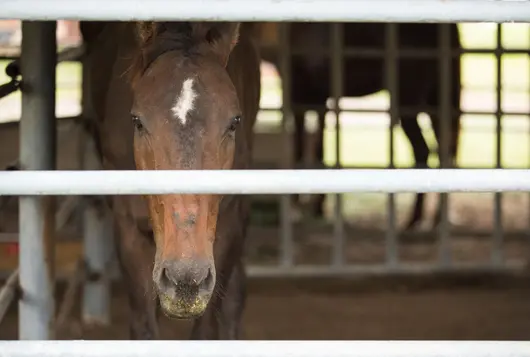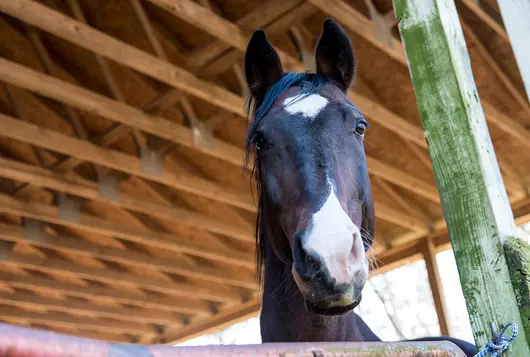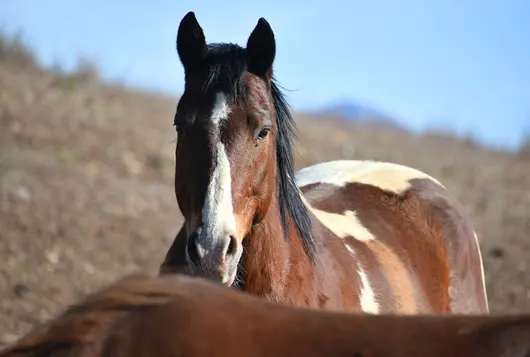Reduce the Risk of Feeding Horses Contaminated Hay

While horses may normally avoid ingesting noxious weeds or moldy hay, they can be more likely to ingest them when mixed into their feed. It’s especially important to be cautious when horses don’t have access to pasture and additional feedstuff.
Potential Health Risks from Contaminated Hay
- Hay containing endophyte-infected fescue can cause reproductive problems (such as prolonged gestation, dysmature foals, and agalactia) in pregnant mares
- Hay with legumes (especially clover) infected with Rhizoctonia leguminicola can cause slaframine toxicosis in horses, which can lead to profound hypersalivation and dehydration
While contaminated hay can cause direct negative effects to a horse’s health, there can also be indirect effects:
- Moldy hay is less palatable and can decrease feed intake, leading to a loss of condition in horses
- Weeds with little nutritional value can also cause weight loss, as they can decrease the percentage of grass or alfalfa, and thus the nutritional content of the hay
- Underlying respiratory issues can worsen in horses with heaves
Decrease Risk of Dangerous Hay
- Regularly inspect hay fields for the presence of noxious weeds. If found, they should not be bailed into the hay. Either eliminate the weeds with the use of herbicides or, if possible, avoid harvesting that area of the field.
- Be sure to purchase hay from reputable producers.
- Maintain the quality of the hay:
- Store in a dry, cool area with good ventilation
- Keep vermin away from the hay—rodents who die in the hay and are fed to horses may cause botulism and feces from opossum can potentially pass on EPM
Handling Ingestion of Contaminated Hay
If you think a horse may have ingested a toxin in their hay, immediately stop giving them the suspect feed. Be sure to thoroughly examine the hay to see if you can identify any areas of mold or any noxious weeds. Often, the best way to do this is to submit a sample of the suspect hay to a veterinary diagnostic lab. Because some hay may have “hot spots” where there are high concentrations of mold or noxious weeds, be sure to sample multiple areas of the hay from different bales. Samples should be stored in a dry, cool area before submission. Typically, you will need to submit about one pound of hay for testing.
We have lots more on this subject:


